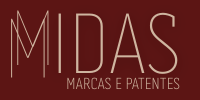Introduction
A trademark is one of the most valuable assets a business can own. It provides exclusive rights to a name, logo, slogan, or other distinctive signs that identify a brand. However, not everything can be registered as a trademark. In Brazil, the National Institute of Industrial Property (INPI – Instituto Nacional da Propriedade Industrial) is responsible for trademark registration and has strict guidelines on what qualifies for protection.
This article explores what can and cannot be registered as a trademark in Brazil, covering the requirements for registration, common mistakes, and strategies for choosing a strong, protectable brand.
What is a Trademark?
A trademark is a sign that distinguishes goods or services from those of competitors. It can take various forms, such as:
- Wordmarks: Business names (e.g., “Nike”, “Coca-Cola”)
- Figurative Marks: Logos and symbols (e.g., the Apple logo)
- Combination Marks: A mix of words and logos (e.g., McDonald’s golden arches with the name “McDonald’s”)
- Three-Dimensional Marks: Unique product shapes (e.g., the Coca-Cola bottle shape)
- Sound Marks: Distinctive jingles or audio branding
- Color Trademarks: Specific color combinations associated with a brand (e.g., Tiffany & Co. blue)
A registered trademark grants the owner exclusive rights to use the sign in commerce and prevents unauthorized use by third parties.
Requirements for Trademark Registration
To be eligible for trademark registration, a sign must meet the following criteria:
- Distinctiveness: The trademark must be unique and capable of distinguishing a brand’s goods or services.
- Non-Deceptiveness: It must not mislead consumers about product origin, quality, or function.
- Legality: It must not violate laws, ethics, or public order.
- Availability: It should not conflict with existing registered trademarks.
If a sign does not meet these criteria, INPI may reject the application.
What Can Be Registered as a Trademark?
The following elements are eligible for trademark registration in Brazil:
1. Brand Names and Business Names
Distinctive brand names can be registered to protect a company’s identity. Examples include:
- Amazon
- Starbucks
- Adidas
2. Logos and Symbols
Logos that are uniquely designed can be protected. Examples include:
- The Nike swoosh
- The Twitter bird
- The Apple logo
3. Slogans
Marketing slogans can be registered if they are distinctive and original. Examples include:
- “Just Do It” (Nike)
- “I’m Lovin’ It” (McDonald’s)
4. Product Packaging and Trade Dress
Unique product packaging that helps identify a brand may be eligible for trademark protection. Examples include:
- The shape of the Toblerone chocolate bar
- The Coca-Cola bottle
5. Sounds and Jingles
Distinctive sounds that consumers associate with a brand can be trademarked, such as:
- The Intel startup sound
- The MGM lion’s roar
6. Colors (Under Certain Conditions)
Specific color combinations or distinctive color schemes can be protected if they have acquired secondary meaning. Example:
- Tiffany & Co.’s blue box
What Cannot Be Registered as a Trademark?
While many elements qualify for trademark protection, some signs are explicitly prohibited under Brazilian law. These include:
1. Generic or Common Terms
Words that describe a product’s nature or function cannot be trademarked. Examples:
- “Coffee” for a coffee brand
- “Laptop” for a computer company
2. Deceptive or Misleading Trademarks
Signs that mislead consumers about a product’s origin, composition, or quality cannot be registered. Example:
- Registering “Organic Pure” for non-organic products
3. Government Symbols and Official Seals
Marks that include national flags, government emblems, or official symbols are prohibited. Examples:
- The Brazilian national flag
- The Olympic rings
4. Commonly Used Expressions or Industry Terms
Generic phrases widely used in an industry cannot be registered. Example:
- “Best in Quality” for electronics
5. Offensive or Immoral Signs
Trademarks that contain offensive language, hate speech, or immoral content are automatically rejected.
6. Names and Portraits Without Authorization
Registering someone’s personal name, image, or signature without permission is prohibited. Example:
- Using a celebrity’s name without their consent
7. Imitations of Existing Trademarks
Trademarks that closely resemble existing registered marks are not allowed. Example:
- “Adibos” attempting to imitate Adidas
8. Pharmaceutical and Medical Terms
Certain medical and pharmaceutical terms are restricted to avoid confusion in healthcare. Example:
- Using “Aspirin” for non-Bayer products
Common Reasons for Trademark Rejections in Brazil
INPI may reject a trademark application for the following reasons:
- Lack of Distinctiveness: The mark is too generic or descriptive.
- Similarity to an Existing Mark: The sign closely resembles a previously registered trademark.
- Failure to Specify Goods or Services: Incorrect classification of the product category.
- Legal Violations: The mark includes prohibited elements like flags, offensive words, or misleading claims.
How to Ensure a Trademark is Eligible for Registration
To increase the chances of trademark approval:
- Conduct a Trademark Search: Use INPI’s online database to check for existing trademarks.
- Choose a Unique Name: Avoid common words or descriptive terms.
- Consult a Trademark Attorney: Legal experts help navigate complex applications.
- Ensure Proper Classification: Select the right Nice Classification category.
Step-by-Step Guide to Registering a Trademark in Brazil
- Perform a Trademark Search
- Visit INPI’s online search tool.
- Ensure the desired trademark is not already registered.
- Submit an Application
- Apply via INPI’s e-INPI platform.
- Provide necessary documents and pay the application fee.
- Publication in the INPI Gazette
- The trademark is published for public opposition (60 days).
- Examination by INPI
- INPI reviews the application for legal compliance.
- Approval or Rejection
- If approved, pay the final registration fee.
- If rejected, file an appeal within 60 days.
- Trademark Registration Certificate Issued
- The trademark is valid for 10 years, renewable indefinitely.
Conclusion
Understanding what can and cannot be registered as a trademark helps businesses avoid costly mistakes and legal disputes. A strong, distinctive trademark ensures brand protection, exclusivity, and long-term market success.
By following INPI’s guidelines and seeking legal assistance when necessary, businesses can successfully protect their brand identity and maximize their intellectual property rights.

